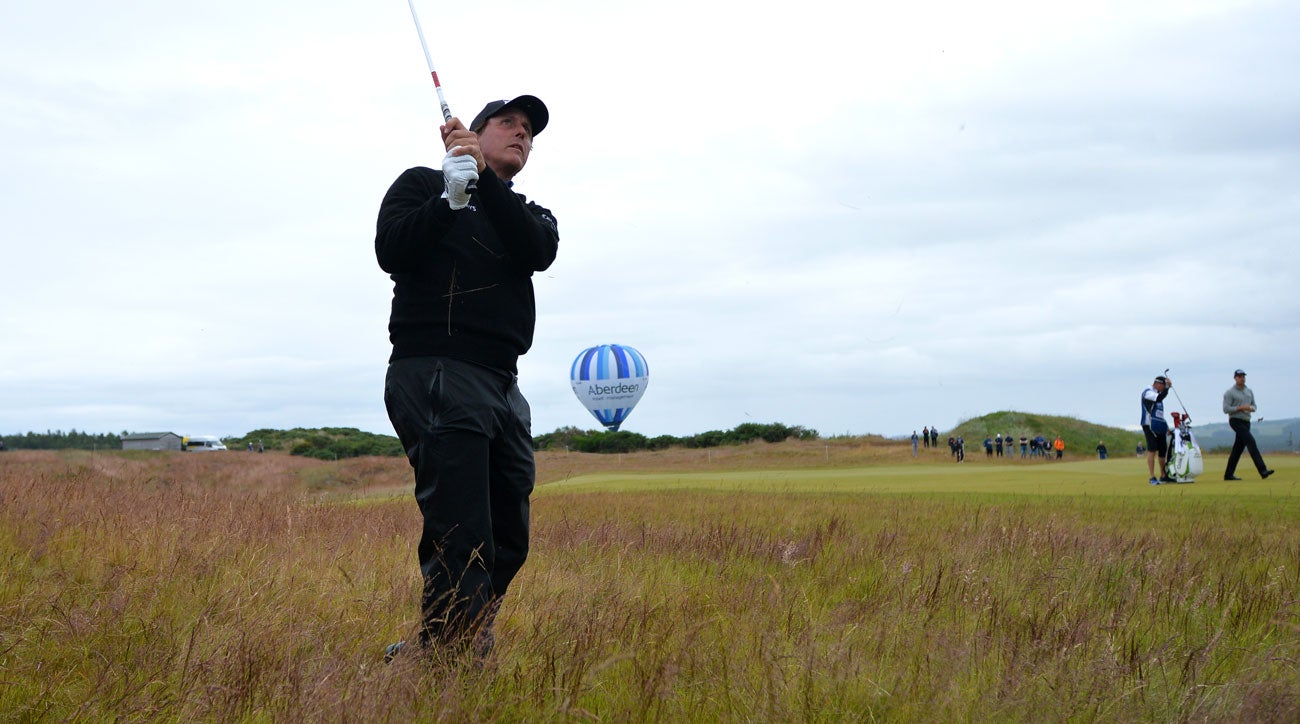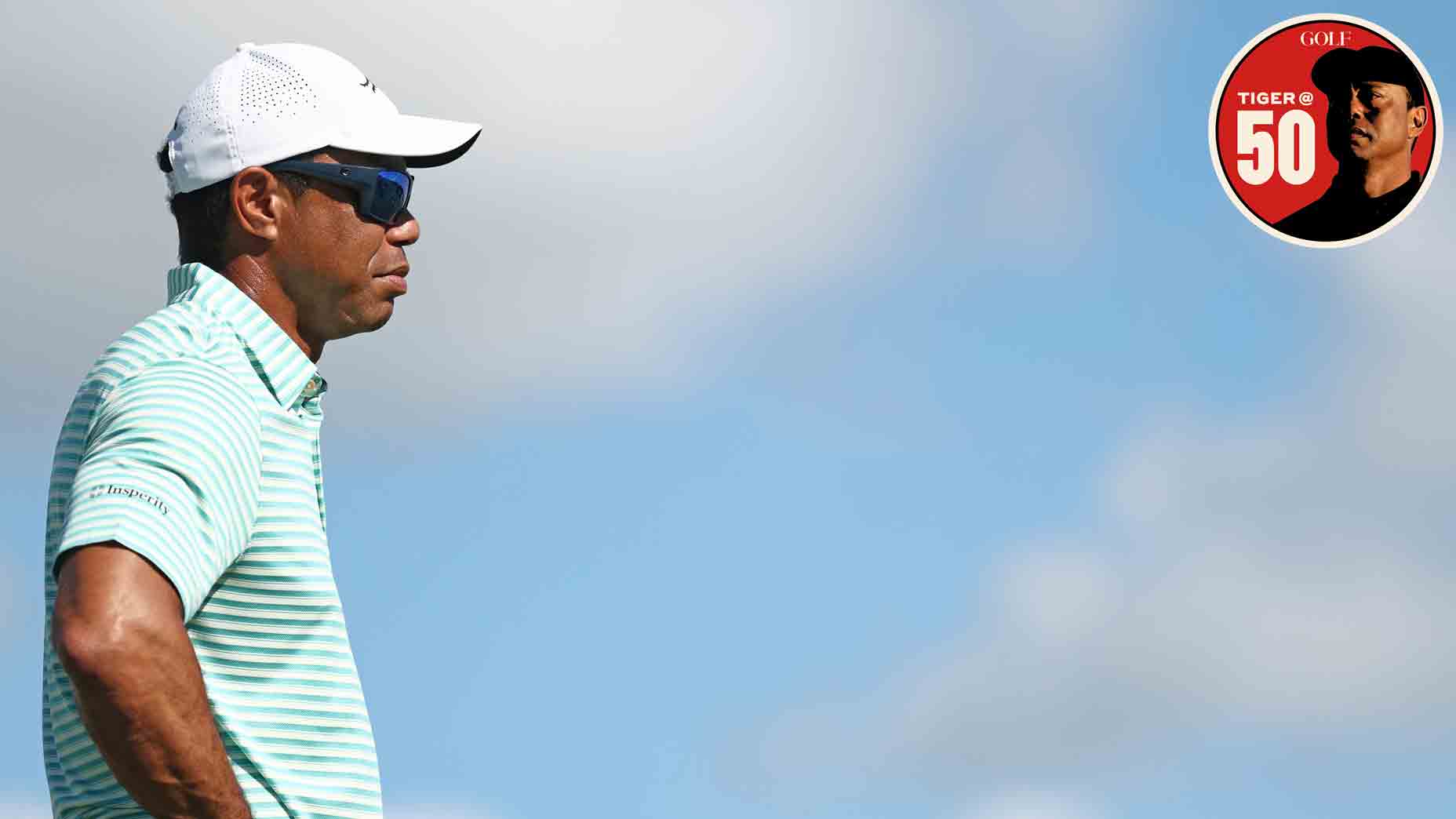Back in May, Hank Haney DM’ed me on Twitter. “Justin Thomas is ranked 151 in scrambling and 39 in strokes gained around the green,” he wrote. “Why is there such a difference with some players between their scrambling stat and SG around the green?” A few weeks later, Brandel Chamblee also tweeted me: “Why is Rory McIlroy ranked second in scrambling yet only 182 in SG around the green?” The simple answer to both is, “Apples and oranges.”
People often mistakenly think scrambling measures wedge play and putting alone. By definition, it measures how often a player scores par or better when missing a green in regulation—but that scoring doesn’t always involve a wedge. Consider the following: On a par 4, a player hits his tee ball out of bounds, then hits the fairway, then the green and two-putts for a six. Even though he never had a wedge in hand, this counts as a failed scrambling attempt. Consider another par 4, where a player hits his tee ball in the woods, chips out to 190 yards in the fairway, hits the next shot to one foot and sinks the putt. Again, the player never pulled wedge, but this counts as a successful scrambling attempt. In short, a golfer can be a strokes-gained ace around the green yet scramble with the worst of them—and vice versa.
This got me thinking about a new stat. Let’s call it strokes gained scrambling. This is a measure of how many strokes a player gains relative to the field on a scrambling attempt—which, for this purpose, I’ll define as starting from an off-green position within 60 yards of the pin—that combines gains and losses from wedge play and putting. Suppose a player starts from a spot where the field averages 2.5 strokes to hole out. If he gets up and down (two strokes), he’d be credited with 0.5 strokes gained scrambling. If he takes three strokes to hole out he loses a half-stroke (-0.5 strokes gained scrambling). If he holes out from a similar spot, that’s 1.5 strokes gained scrambling—the value of three successful up-and-downs. The stat gives less credit for easy up-and-downs (say, 15 feet and in from the fringe) and more credit for tough up and downs (say, 50 yards from the sand).
Strokes gained scrambling offers a more precise measure of scrambling performance, shining a light on the best players with a wedge and putter. Based on the Tour’s amazing ShotLink data, Pat Perez is currently tops in strokes gained scrambling in 2017. See the sidebar charts at right for your new scrambling heroes—and visit this space next month for an even deeper dive into this promising stat.
NUMBERS GAME
To merge traditional and new stats, the tables below includes an effective save rate (ESR), which adds the 2017 Tour average save rate of 59.5 percent to each player’s strokes gained scrambling (SGS) number.
2017 TOUR LEADERS IN STROKES GAINED SCRAMBLING*
1 Pat Perez SGS: 0.108 ESR: 70.4%
2 Luke Donald SGS: 0.098 ESR: 69.4%
3 Brandt Snedeker SGS: 0.097 ESR: 69.3%
4 Webb Simpson SGS: 0.096 ESR: 69.2%
5 Seung-Yul Noh SGS: 0.092 ESR: 68.8%
OTHER NOTABLE PLAYERS, RANKED BY SGS:
6 Rickie Fowler SGS: 0.091 ESR: 68.7%
10 Hideki Matsuyama SGS: 0.080 ESR: 67.6%
15 Jason Day SGS: 0.069 ESR: 66.5%
19 Jordan Spieth SGS: 0.067 ESR: 66.3%
48 Justin Thomas SGS: 0.036 ESR: 63.2%
51 Rory McIlroy SGS: 0.032 ESR: 62.6%
*Through the 2017 John Deere Classic






